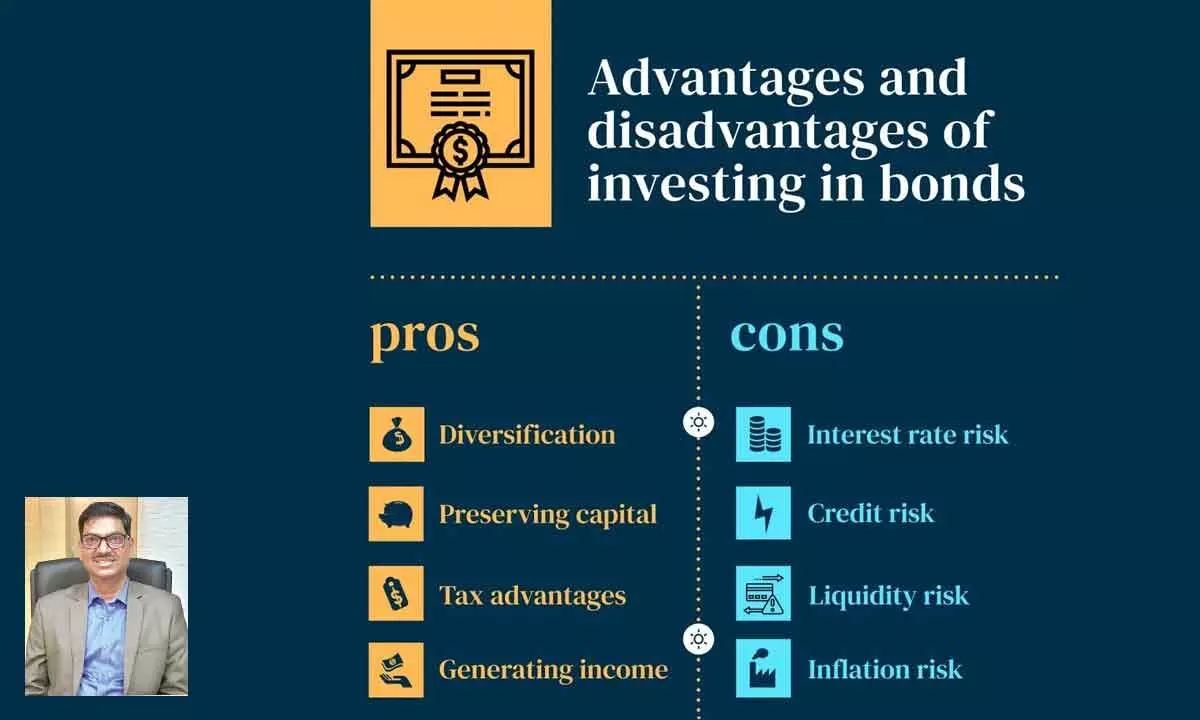Investors should develop patience as the interest rate cycles come and go
The relationship between bond prices and yields are inverted in nature
image for illustrative purpose

In India, the Covid-19 pandemic resulted in a substantial cut in interest rates in order to spur economic growth, among other factors. However, in recent times we have seen an upward trend in the interest rate cycle. The Reserve Bank of India (RBI) has increased the interest rate by 250 bps.
“Na koi Bhi Coupon Ruka, Na Kabhi Mooldhan Hi Hua Phel, Bond Nivesh Ghaate Mein Hai, Ye Hai Sanshodhit Avadhi Ka Khel”
Translation: Neither did a coupon stop, nor did any principal payment fail, Bond Nivesh is at a loss, Modified Duration is the mainsail
A most common query one comes across revolves around the difference between ‘debt’ and ‘bond’.
Debt is something (usually money) that is simply owed by one party to another. It has been a part of our lives for centuries. Now when an entity borrows money from the market, it issues a bond to the lender promising certain periodic money (as a percentage of face value) until the maturity of the debt and payment of face value on maturity. The lender (bond holder) is free to trade in the bond in the secondary market. To put it simply, a bond is a tradeable financial obligation with certain characteristics such as face value, tenor, interest rate (better known as coupon) and frequency of coupon payments.
How do bonds work? The fundamental idea behind bond mathematics is that bond prices are inversely related to interest rates. As interest rates go up, the price of a bond reduces; similarly when interest rates go down the price of a bond goes up. Let us try and understand this concept with a simple example. Suppose you hold a bond with a face value of Rs. 100 that promises to pay Rs. 10 in inter est annually for a period of three years. At the end of each year you would receive Rs. 10 as interest and at the end of the third year the principal of Rs. 100 would be returned. The bond was purchased by you for Rs. 100 thereby yielding you 10%. Now if the yield of the bond goes up to 11% the price of the same bond must be lower than Rs. 100 to yield you the higher rate over the holding period. These movements in bond prices are nominal till you exit from the market. If you hold the bond till maturity and there is no credit event, the entire coupon and face value are paid as promised, irrespective of any fluctuations in the price during tenor of the bond.
Modified duration and interest rate cycles: The relationship between bond prices and yields are inverted in nature. The modified duration measures the change in value of a bond to change in 100 basis points (1%) change in interest rates. If the modified duration of a bond is 2.5, it means for every 1% move in interest rates, the price of the bond will inversely move by 2.5%.
Now it is historically observed that the movement in interest rates is cyclical in nature. In India, the Covid-19 pandemic resulted in a substantial cut in interest rates in order to spur economic growth, among other factors. However, in recent times we have seen an upward trend in the interest rate cycle.
The Reserve Bank of India (RBI) has increased the interest rate by 250 bps (1 bps = One Hundredth of a percentage point). So, if you had invested in a bond post the pandemic when interest rates were low, in most likelihood the price of your bond would be lower, as on today.
However, it is pertinent to note here that the expectations of a pause in rate hike post the 250 bps increase has gone up. This provides an opportunity for the investor to lock in higher rates than the rates that were present 12-18 months back. The crux of the whole idea is for the investor to try and lock in rates for longer when the upward interest rate cycle is near its end. Meanwhile, there is no reason to panic if the investment was made at lower rates. After all, interest rate cycles come and go. Markets will provide multiple opportunities.
(The writer is senior Vice-president, SBI Funds Management Ltd; Translation and text by Rohan Pillai, Sr. Manager, Dealing-Fixed Income, SBI Funds Management Ltd)

